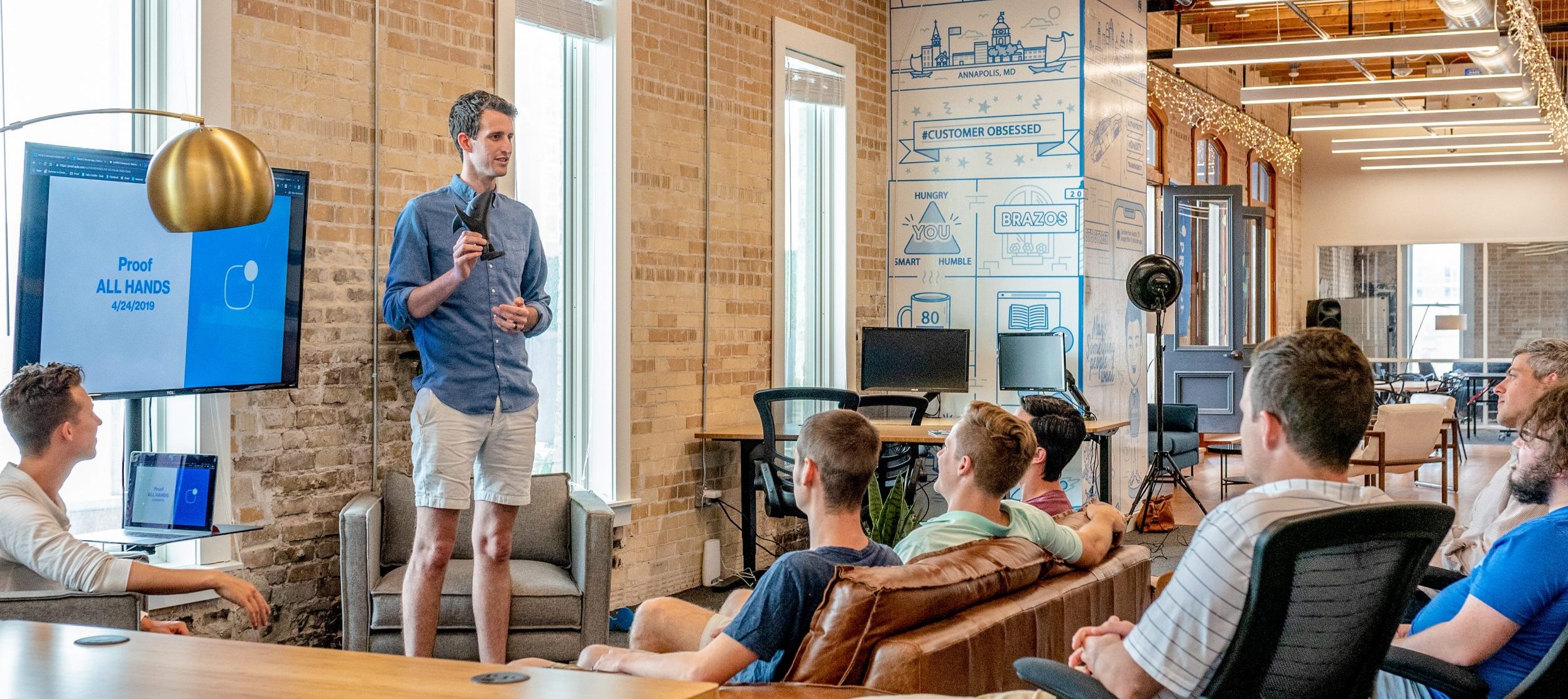Google makes thousands of changes to search each year – in fact, it was reported that in 2018, Google conducted 3,234 updates alone.
While we await the total for 2019, it is still clear to see that, when it comes to managing your website, you should not sit idle. Studies have shown that between 70-80% of users research a business online before making a purchase, meaning that being found online is vital for your company. As Google continues to roll out algorithm updates, it’s important to adjust your website as needed in order to boost your search visibility and gain first page rankings.
But with so many changes being made throughout the year, it can be hard to keep up. So, we’ve compiled a list of all algorithmic changes of 2020 so far, including the winners and losers, which we’ll update as time goes on.
January 13th – January 2020 Core Update
The first update of the year was announced by Google on January 13th, rolling out across the world and affecting all languages. Tracking tools showed high volatility for three days, with Google confirming that the update was ‘mostly done’ rolling out on the 16th.
Core updates do not target a particular industry, and anyone can be affected. They are designed to improve how Google’s systems rank content. The search engine giant explains this in more detail on their blog:
“…imagine you made a list of the top 100 movies in 2015. A few years later, in 2019, you refresh the list. It’s going to naturally change. Some new and wonderful movies that never existed before will now be candidates for inclusion. You might also reassess some films and realize they deserved a higher place on the list than they had before. The list will change, and films previously higher on the list that move down aren’t bad. There are simply more deserving films that are coming before them.
Winners and Losers
Towards the end of 2019, most updates saw YMYL (your money or your life) sites as the most affected. This update was no different, particularly for the health and finance sectors. Very Well Health was one of the top winners, according to multiple sources, as was Yahoo Finance. A few dictionary sites came out triumphant, too. Meanwhile, a further group of healthcare sites fell victim.
Overall, this update has been duped by many as large and fierce, causing great tremors throughout top ten rankings.
January 23rd – Featured Snippet Deduplication
While this wasn’t exactly an algorithm update, the deduplication of featured snippets was still a considerable change that majorly affected websites’ click-through-rates (CTR).
Previously, featured snippets (pictured below) were counted as their own, stand-alone search engine results page (SERP) feature, not an organic search listing. If a site obtained a featured snippet, the same URL would also appear in the listings below as an ordinary listing.

On the 23rd, Google announced that, if a URL is featured in a snippet, it would not appear on the first page of search results. Thus aligning this SERP feature with Google’s claim that a featured snippet is an organic entity, counting as position number one. Before this deduplication, a featured snippet counted as position zero.
Winners and Losers
In this case, there were no obvious winners and losers to be precise, but many sites did report losses of traffic. This deduplication led to many site owners having to decide which they’d rather lose: a first-page ranking, or a featured snippet. Moz tried conducting a CTR study to see which loss would have a bigger impact, but unfortunately, it is impossible to decipher if clicks to a URL were from the featured snippet or the organic listing.
Overall, this major change was met with confusion and outcry and sparked much discussion over the future of featured snippets.
February 9th – Unconfirmed Search Ranking Update
While a core update has been denied by Google, we have decided to include it in this blog as there were significant amounts of chatter and tracker tools were off the charts for five days – longer than the standard algorithm updates.
From the February 9th, discussions of a suspected search update started to arise on Twitter and various web forums. SEO spokesperson Barry Shwartz reported the fluctuations as ‘really big, maybe even massive’ changes that were taking place. Many sites experienced severe traffic drops and spikes.
On the 13th, Google’s Danny Sullivan stated, ‘We do updates all the time’ in response to this speculation. This suggests that algorithmic changes were made during this time, just not on the same scale as a core update.
Winners and Losers
Unfortunately, it’s hard to decipher a clear sector that either benefitted or suffered the most following these changes. The suggested update occurred across the globe, and there were both winners and losers in a range of industries. There was even some speculation that several updates actually took place, as many of the sites that saw drops then experienced traffic increases a few days later. The one thing that was certain following the confusing five days was that some sort of changes were made – it’s just unclear what exactly those changes were.
May 4th – May 2020 Core Update
The second core update of the year began rolling out on May 4th and appeared to have mostly ended by the 7th. Rank Ranger dubbed this update as an ‘absolute monster’ as the effects appear more brutal than those which occurred in January. Furthermore, this update took place amidst the Coronavirus pandemic, which had already significantly affected a wide range of sites and caused a change in search patterns.
Winners and Losers
Unlike many other updates, the May core update appeared to have less focus on typical E-A-T areas and was broader than usual updates, making it harder to detect a clear winner or user. Marie Haynes claimed that Google is getting better at recognising which links are ‘truly recommendations for your content and which are self-made for SEO reasons.’
It was interesting to note that Spotify took a hit, despite it progressing steadily over the last few years.
As of today, 15th May, information surrounding this update is still rolling out, and so we will continue to update our blog with our findings.
June 23rd – Suspected Federal Update
On June 23rd, there were reports of another algorithm taking place, although Google is yet to comment. The SEO trackers were showing high volatility in the SERPs, and many reported significant gains.
What’s interesting about this update is that it seemed to target .gov sites, along with other YMYL industries, a trend which appears to be mirrored across the globe. This pattern is what led Barry Shwartz to label is update as ‘The Federal Update.’
Winners and Losers
.gov sites were not the only winners of this update; health and news sites were also affected. But it is clear to see that government sites were the ones impacted the most. It’s possible that Google now prefers these sites over other domains, due to their authority. Authority is part of the E-A-T metric that Google refers to in its Quality Rater Guidelines, so it’s only natural for .gov and .org sites to experience a boost in search visibility.
July 6th – Small Search Ranking Update
A small search ranking update may have taken place on 6th July, lasting until the 8th. While there wasn’t as much chatter surrounding this update as the last, some webmasters still detected some changes in their site traffic. This algorithm update targeted niche websites, and our SERP volatility tracker reported nothing more than a slight increase in movement amongst rankings.
Winners and Losers
It’s harder to say who the winners and losers were with this update, as only a small number of sites were affected. Education sites reportedly saw some movement, but it’s highly likely that a particular niche of sites was amongst those most affected, due to the small amount of volatility.
July 24 – Suspected Search Ranking Update & What SEO’s Get Wrong About Google’s Updates
Not long after the previous suspected update, another one came along. Only this time, it was much bigger, with our volatility tracker showing fluctuations amongst the SERPs for most industries.
To add to this, a few days later (28th July), Barry Shwartz published an article on Search Engine Land exploring what SEO’ers often get wrong about Google algorithm updates. Shwartz promotes the idea that we should stop obsessing over what Google is changing each time an update rolls out and focus on our websites instead. This is because most people blame their drops in traffic on updates, when, in reality, it’s because their websites usually aren’t up to scratch. The time spent trying to crack the algo updates should be spent on improving content, UX, link profiles and other ranking factors.
This coincides with a statement Google made in August 2019. They stated that, when it comes to improving your site following updates, ‘There’s nothing to fix.’ Nothing really changes when Google rolls out updates, only how they assess content. The search engine giant then followed this up with ‘We suggest focusing on ensuring you’re offering the best content you can. That’s what our algorithms seek to reward.’ Shwartz’s advice, therefore, aligns with Google’s own – but what do you think?
Marie Haynes chimed into this discussion, offering a few tips to help you decipher if any traffic losses are the result of a recent update. You should start by looking at any recent changes made to your site, as well as the number of pages that were affected. If a noticeable drop in traffic occurred within 48 hours of an algorithm’s start date, then that was likely the cause.
Winners and Losers
Many industries experienced some fluctuations, according to our volatility tracker. The sports, news and arts & entertainment industries saw drastic changes. According to SEMrush, victims included WorkingTitleFilms.com, Marvel and Talk Sport, whereas winners included GuitarWorld, Teen Vogue and TheStage.com.
August 10th – August 11th – 2020 Google Glitch
On Monday afternoon, Barry Schwartz reported one of the largest Google updates many had seen for a long time. He commented that it looked like there was “a big Google search ranking algorithm rolling out”, although it was not confirmed by Google.
By Monday night, many in the SEO community were noticing huge discrepancies in search results. Content that was once high-ranking suddenly seemed to drop several pages, while other low-ranking sites started popping up in the first pages of the SERPs.
However, it was soon revealed that this was not an update, but in fact a glitch.
Fortunately, things seemed to revert to normal by August 11th, and Google’s John Mueller later posted on Twitter that the glitch had been fixed.
On August 11th, Google commented on the glitch, “On Monday we detected an issue with our indexing systems that affected Google search results. Once the issue was identified, it was promptly fixed by our Site Reliability Engineers and by now it has been mitigated.”
Winners and Losers
Technically, there weren’t really any winners or losers in this scenario – as it was a glitch – but it was certainly interesting to see which sites temporarily ranked higher.
According to Marie Haynes, sites who experienced a boost in traffic included medical articles that did not include supporting references or links to authoritative sites. These articles referenced natural remedies that were not backed by scientific facts. Haynes also commented that many of the sites that started ranking high included unnatural links.
But, on August 15th, it appeared the glitch trauma was not over. Strong amounts of chatter picked in the SEO community following significant changes being reported in the SERPs, similar to those seen during the initial glitch. But by the 16th, things seemed to have calmed down, leading to speculation of another issue from Google’s side.
The amount of fluctuations were captured by our volatility checker, which was off the charts throughout the 15th.
If this is another glitch, this mirrors the pattern that’s been forming recently when it comes to indexing. Speculation was rife in May with more indexing issues, although Google’s John Mueller stated that there wasn’t a bug, at most a few minor glitches. There were also reports in June, when Google experienced more problems. Furthermore, throughout 2019, there were many problems with content being de-indexed, and at one point, new content wasn’t being indexed at all.
If your website has been affected by an algorithm update and you’re struggling to find a solution, get in touch with us at Fibre Marketing, and we’ll help you get back on track.










